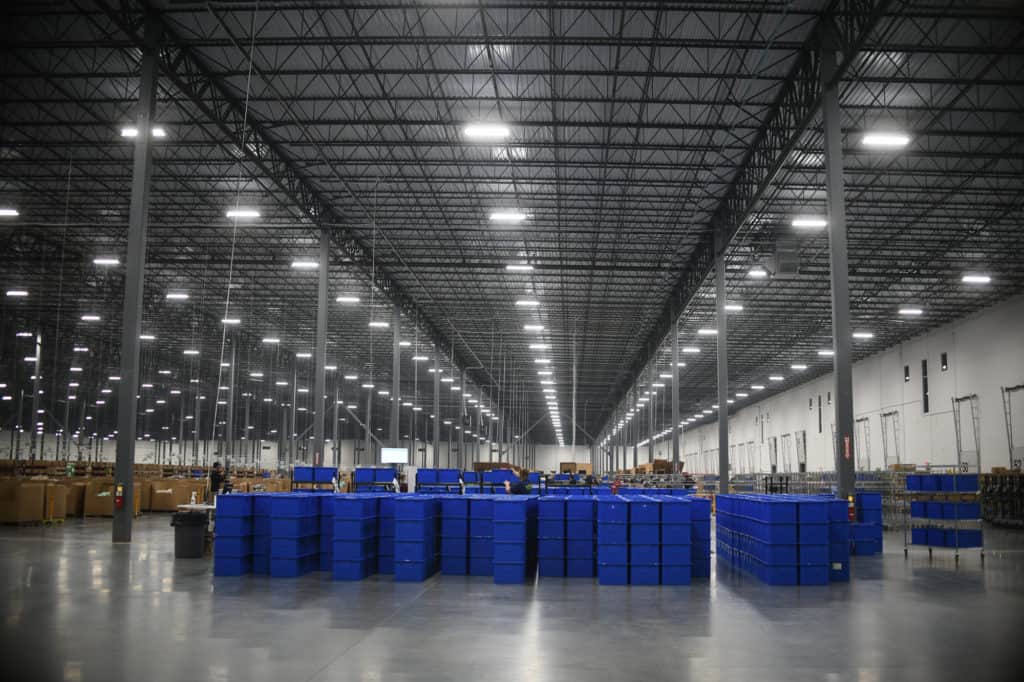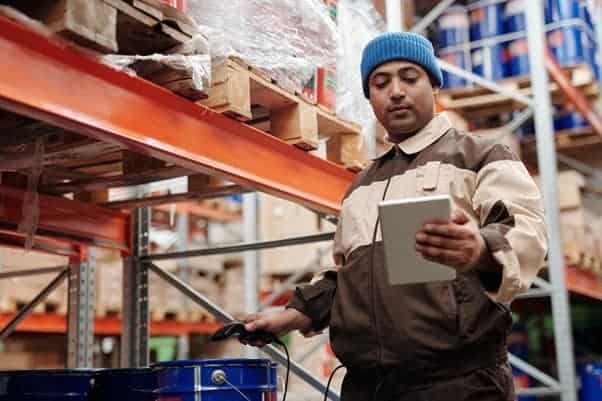Order fulfillment. It’s a goal and a challenge for any company – the promise of a sale coupled with the potential pitfalls of order fulfillment. So, how can you improve the process from order placement to delivery?
By following these 7 simple steps to improve your e-commerce order-fulfillment process, that’s how:
- Demand seamless integration
- Enable end-to-end order visibility
- Choose the right shipper
- Enable exception-based order management
- Be smart about your warehouse locations
- Communicate with your customer
- Accept returns & refund like a champ
A quick definition of order fulfillment
To begin, let’s review the standard ecommerce order fulfillment process steps that comprise successful order fulfillment. For many companies, it looks something like this:
- Receive online order
- Process order in your back-office system (example: an ERP)
- Notify customer that order has been received
- Send request for fulfillment to the warehouse
- Order is picked
- Order is packed
- Order is shipped
- Shipping notification is sent to the customer
- Order arrives

Follow these 7 steps to improve your ecommerce order-fulfillment process
If all goes well, the customer’s purchase arrives on time, undamaged and includes the correct item(s). So, how can your e-commerce company achieve this trifecta? Here we go:
Step 1: Demand seamless integration
You probably don’t manufacture in-house the goods you sell. Most likely, your online goods are sourced from various distributors, stored in warehouses and then drop-shipped to your customers.
If this is the case for your company, then it’s incredibly important to integrate seamless connections with your suppliers through an order management system (OMS) that communicates smoothly between your systems and your suppliers’. Finally, you can say goodbye to the dreaded “typically ships in 2 to 4 weeks” message!
Step 2: Enable end-to-end order visibility
You are linked in real-time to your suppliers, via your OMS. Now, you need to be sure you can see (= visibility) everything throughout your supply chain.
In simple language, this means that both you and your suppliers should be able to access the same catalog, inventory fulfillment and order fulfillment processes — to see exactly what items are available, their quantities and their locations. Additionally, your browsing e-commerce customers should be able to see whether an item is in stock and, if quantities are low or quantity matters, how many items are available.
This clarity is known as end-to-end visibility and is an important aspect of both customer satisfaction and accurate order fulfillment.
Step 3: Choose the right shipper
Okay, so now that your product is perfect and your back-end operations are running smoothly, it’s time to look at the major speedbump of e-commerce order fulfillment: shipping. Bottom line, if your shipper is less than stellar and/or underperforms on a regular basis, your customers will take out their frustrations on you — on your company’s reputation. Not the shipper’s.
Enable regular audits of your current shipper: Do they offer real-time, accurate order tracking? Has your shipper seen a recent uptick in late shipments, delayed shipments, lost shipments, forgotten shipments or damaged deliveries? If so, then it’s time to invest time and resources into finding a new and better shipper to meet your fulfillment expectations.
Step 4: Enable exception-based order management
While we’re on the topic of order shipment, end-to-end visibility also allows you to enable exception-based order management. What does that mean? Basically, that instead of merely notifying customers that orders are delayed (and therefore opening yourself to bad customer experiences), you can instead automatically upgrade shipping methods to meet your original delivery promise.
Yes, exception-based order management can cost you a bit extra in shipping, but it will save you a headache (and financial repercussions) of irate customers and lost business. This automated process can also instill brand loyalty and increase the likelihood of repeat purchases.
Step 5: Be smart about your warehouse locations
Today’s e-commerce shoppers want their orders, and they want them quickly. There are two ways your company can fulfill this desire:
- Choose warehouses and shippers that can meet quick-picking and quick-shipping (via pricey air delivery) requirements; or
- Store products in many warehouses, located throughout your delivery area and therefore close to your customers’ locations, to ensure fast but low-cost ground shipping.
Finally, be sure to employ smart shipping algorithms, which will help identify the optimal shipping method so you don’t overspend but don’t under-deliver, either. (See above, re: exception-based order management.)
Step 6: Communicate with your customer
Throughout this entire process, you should be in close communication with your customer. And we’re not talking about a simple “Thank you for your order” email, either. No, what we mean is up-to-date, on-demand, real-time communication regarding order status, from order received and in process, to order shipped and shipment delivered.
Step 7: Accept returns & refund like a champ
Breathe. Returns happen. (In fact, about 30% of online purchases are returned.) Refunds are due. It’s part of every business, but not every business has a good attitude about it. Be the exception. Stay cool.
And always, always be efficient. Try to work only with suppliers that accept returns, charge zero restocking fees and can process refunds and replacements. Be clear about your return policy, yes, but also develop smooth processes to handle returns, manage reverse logistics and issue refunds.
Look, it’s called retail therapy for a reason: It’s good for your customer! So, try to think of your order fulfillment process as customer satisfaction fulfillment: As a retailer, it’s your job to keep your online customers feeling good, throughout every step of the order process.


